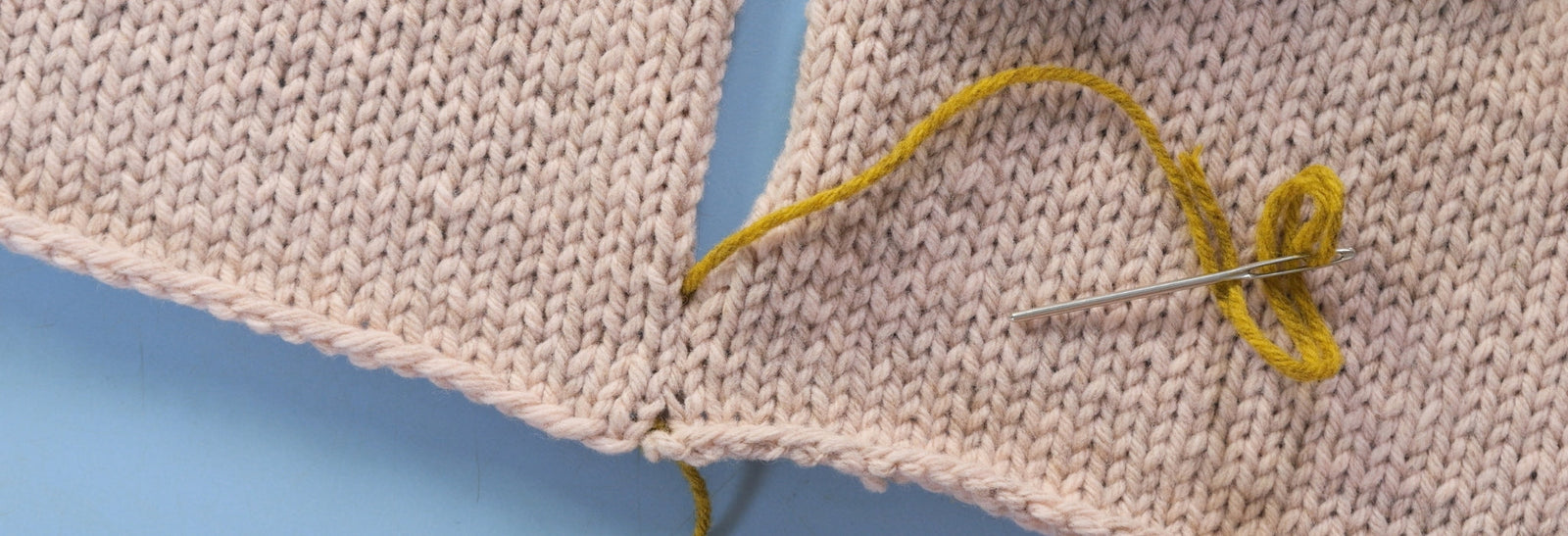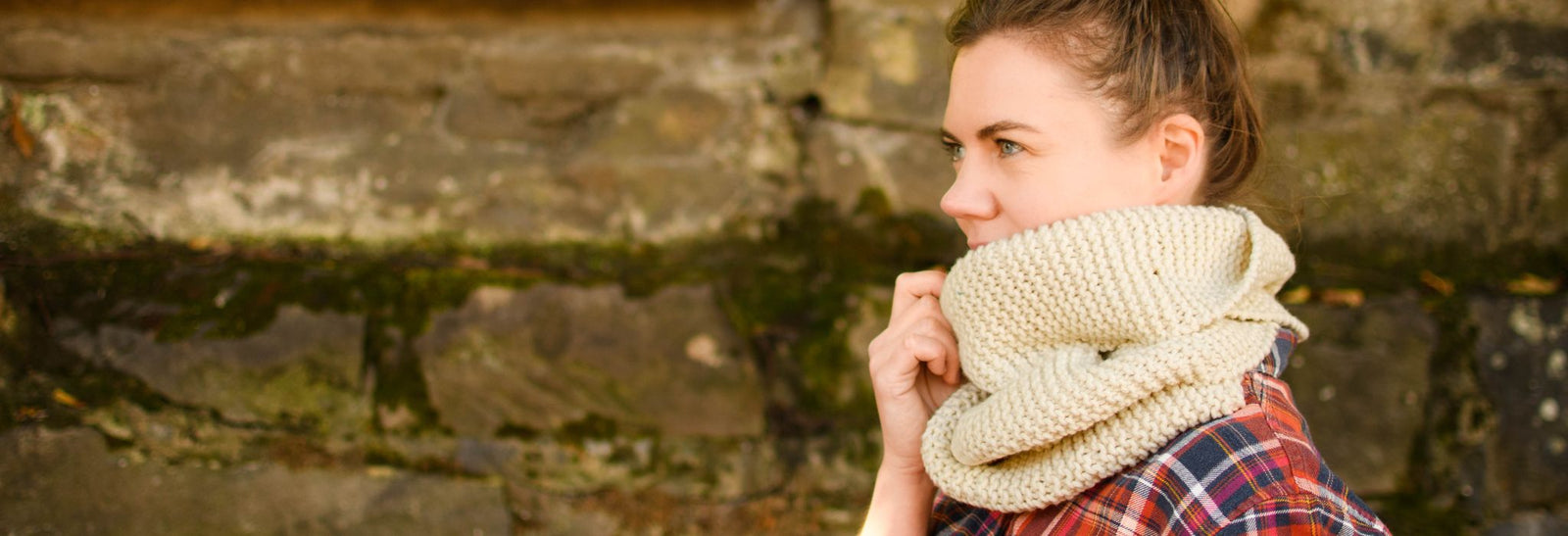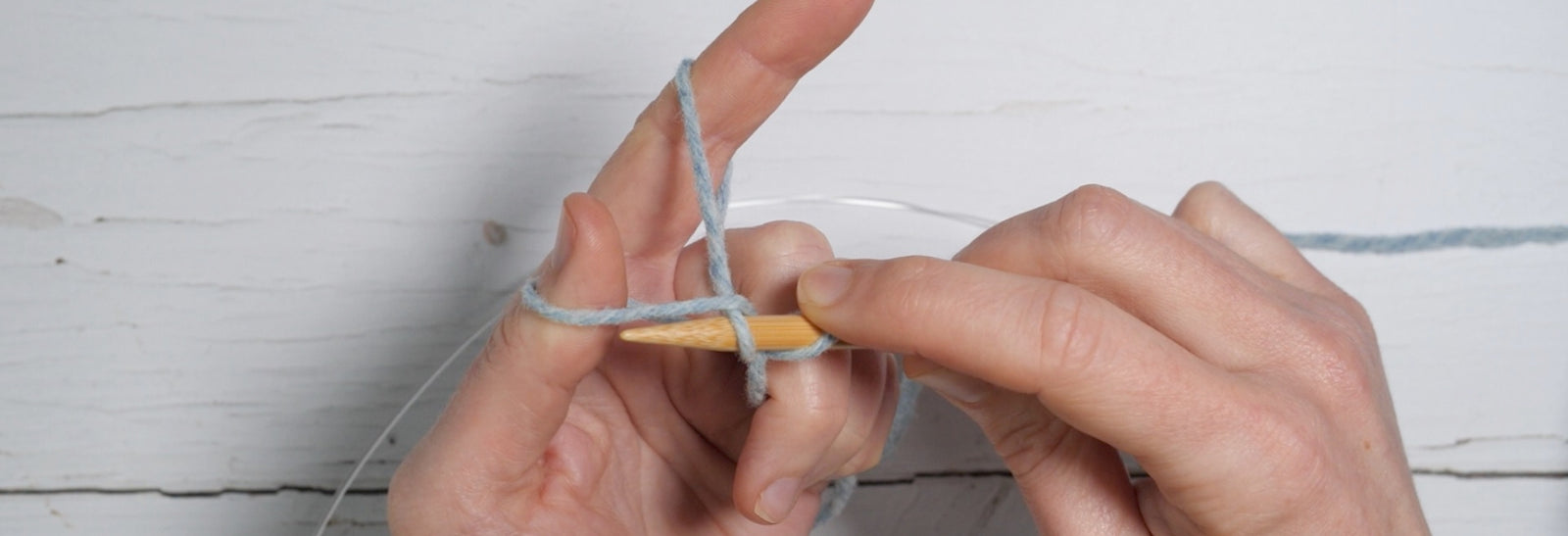Your Cart is Empty

How to knit twisted rib
December 11, 2020
What is Twisted Rib?
Twisted rib is a beautiful stitch to add to your knitting repertoire! This easy variation on 1x1 rib produces a wonderfully tidy, reversible fabric that does not curl. Although it has “rib” in the name, twisted rib generally lays flat and doesn’t contract the way standard ribbing does when relaxed. Twisted rib is perfect for decorative edges where you don’t need or want the elasticity of standard rib, such as sweater hems and accessories.
To knit twisted rib, all of the knit and purl stitches are worked through the back loop on every row or round, twisting the stitches each time and creating crisp, defined columns.
What is Half-Twisted Rib?
Half-twisted rib is very similar to twisted rib, but only half the stitches are worked through the back loop on each row. Generally, the knit stitches that show on the outside (right side) of the work are twisted and the purls are worked in the standard manner. It’s a bit faster than twisted rib and appears the same from the outside, but half-twisted rib isn’t as reversible. Instead, one side will show columns of twisted knit stitches, while the other side will look like standard ribbing. Half-twisted rib is often worked in the round, as in the Poza cowl.


Learn how to knit through the back loop, purl through the back loop, and create twisted rib with our step by step tutorial below!
How to Knit through the back loop (tbl)

Insert the right needle tip into the BACK of the stitch (the side of the stitch that is further away from you) from right to left - the right needle should be behind the left needle.

Wrap yarn counter-clockwise around the right needle as usual.

Draw the new stitch through the back loop, towards you, and remove the completed stitch from the left needle.
How to Purl through the back loop

Insert the right needle tip into the BACK of the stitch (the side of the stitch that is further away from you) from left to right, then bring the tip of the needle towards you.

The right needle should cross below the left needle and be in front.

Wrap yarn counter-clockwise around the right needle tip.

Draw the new stitch through the back loop, away from you.

Remove the completed stitch from the left needle.
Working Twisted Rib

1. Knit the first stitch through the back loop.

2. Bring the yarn to the front between the needles.

3. Purl the next stitch through the back loop. 4. Bring the yarn to the back between the needles.
Repeat steps 1-4 to the end of the row or round.
Twisted rib is worked the same flat and in the round. Maintain the rib pattern by alternating between knit and purl, working every stitch through the back loop.
Working Half-Twisted Rib
Half-twisted rib is most often worked in the round, where all knit stitches are worked through the back loop and all purl stitches are worked through the front loop.

1. Knit the first stitch through the back loop.

2. Bring the yarn to the front between the needles.

3. Purl the next stitch normally, through the front loop.

4. Bring the yarn to the back between the needles.
Repeat steps 1-4 for Half-twisted rib in the round.
When working flat, the knit stitches are twisted on the RS rows and the purl stitches are twisted on the WS rows.

Work RS rows as above, knitting through the back loop and working purl stitches through the front loop.

On wrong side rows, work the knit stitches through the front loop…

…and the purl stitches through the back loop.

Repeat these two rows for Half-twisted rib worked flat.
Things to keep in mind
Since it doesn’t contract, twisted rib will be wider than a standard 1x1 rib on the same number of stitches.
Although we show a 1x1 twisted rib example, you can apply the same techniques to any size of rib!
Give your twisted rib projects the perfect finish with a tubular cast on or alternating rib cast on, paired with a sewn tubular bind off.
Ready to try twisted rib on a project? The Poza cowlbeautifully incorporates crisp half-twisted rib into the lace patterned border.

Also in Journal

Learn to Knit: Mattress Stitch
March 29, 2023
By following our step-by-step mattress stitch knitting tutorial, you'll learn how to make your seams look beautiful and how best to prepare your knitting so that when you seam it with mattress stitch, it goes smoothly on the first try.
Read More
How to Knit a Scarf: A Beginners Guide to Scarf Knitting
March 23, 2023
Want a quick and easy beginners tutorial on how to knit a scarf? This garter stitch scarf is easy to knit and requires just 3 skills; casting on, the knit stitch and casting off.
Read More
Learn to knit: the long tail cast-on
February 03, 2022
The long tail cast on is a great multi-purpose knitting cast on and the perfect place for beginner knitters to start. Learn how to work the long tail cast on and how to estimate the length of yarn needed with our clear step by step tutorial and video.
Read More Recent Articles
- Learn to Knit: Mattress Stitch March 29, 2023
- How to Knit a Scarf: A Beginners Guide to Scarf Knitting March 23, 2023
- Learn to knit: the long tail cast-on February 03, 2022
- How to Kitchener Stitch December 09, 2021
- Crochet Provisional Cast-on December 02, 2021
- Learn to knit: How to knit in the round with double pointed needles November 25, 2021
- Learn to knit: How to knit in the round using the magic loop technique November 25, 2021
- Learn to knit: How to knit in the round November 25, 2021
- Knitted Gift Ideas for you and your loved ones November 18, 2021
- Celebrating our Porty Hat Preview Knitters October 28, 2021
Free resources
-
KALS, step-by-step pattern guides and free patterns
Learn brioche with the free Daniel's Hat pattern
Tombreck - a free chevron beanie pattern
Working the brioche neck detail on the Polwarth sweater
Basics
Casting on
Decorative Channel Island Cast-on
Binding off
3 Easy Stretchy Bind-offs (p2tog bind-off; k2togtbl, k1 bind-off; Jeny's surprisingly stretchy bind-off)
Tubular Bind-off for brioche stitch
Increasing
Paired increase methods compared
Decreasing
Brioche stitch double decreases
Knitting in the round
How to Knit in the round using Magic Loop
How to Knit in the round using DPNs
Short rows
Swatching and gauge
Tips and tricks
Avoiding ears when binding off
Tighter purl stitches for neater cables and ribbing
Cabling without a cable needle
Reading knitting patterns
Understanding "continue in pattern"
Finishing
Garment knitting
Joining the body and sleeves on a seamless bottom up sweater
Sizing
Inclusive garment knitting
How to pick a garment without a model for you (specifically addresses finding garment patterns when your gender identity isn't represented and the styles you want to knit might not be sized to fit your body)
How does ease affect inclusive size ranges?
Specific stitch patterns
Lace
Identifying and fixing mistakes in lace knitting
Colourwork
Getting started with stranded colourwork
Understanding colour dominance
Working stranded colourwork over small circumferences
Decreases in stranded colourwork
Holding the yarn for stranded colourwork
Ladderback Jacquard (a neat way to deal with long floats)
Cables
Cabling without a cable needle
Cabling without a cable needle on the wrong side
How to knit cabled decreases
Closed ring cable increases and decreasesBrioche
How to work brioche stitch in the round
Other crafts
Cross stitch
How to begin your first large cross stitch project
How to finish a cross stitch project with an embroidery hoop frame
Mending

Sign up today
Find out the latest news from the studio such as sales, pattern releases, and new workshops or KALs our learning community, The Knitwork. We also share helpful tips and exclusive subscriber discounts...

